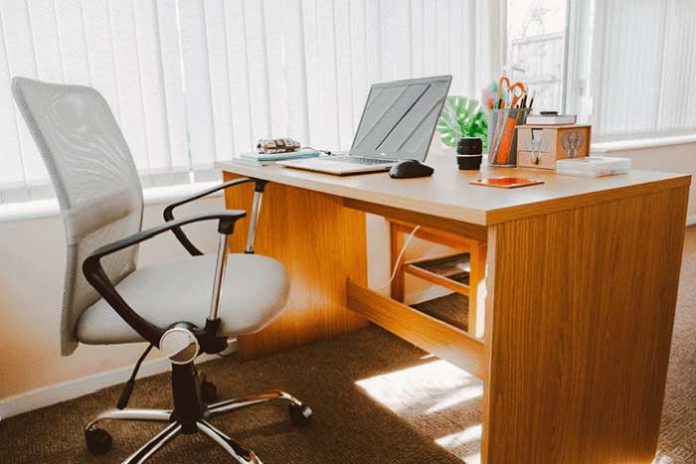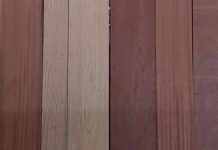Whether you’re a collector or have a taste for exquisite artifacts, you must know about the elegant cocobolo desk. Made from the rare Central American tropical hardwood, cocobolo desks are super hard to acquire.
Known for its striking, rich reddish-brown hue with dark streaks, cocobolo wood is prized for its fine texture and excellent polish ability. Highly sought after by artisans for its durability and natural beauty, it’s often used in luxury furniture and intricate woodwork.
This rarity and the limited supply are what make these desks so ethereal. So, if you have an eye for unique items, this desk should be on your list.
What is a Cocobolo Desk?
The cocobolo desk is made out of rare cocobolo wood. The design of this desk is quite simple yet aesthetically pleasing. This specific desk can make your office stand out, its executive and top of the class quality give the coco bollo its special feel.
Cocobolo wood is one of the best woods for desks and it is mainly because of its extraordinary useful characteristics. If you want to leave your clients or guests in awe then desk cocobolo is the best choice for your office.
How to Handle Cocobolo Wood?
If you are one of those few lucky ones who own cocobolo wooden artifacts and are looking for ways to care for them? Then you have come to the right place because in this section we’ll be telling you how you can maintain wooden house furniture. Being a true rosewood, the main problem with cocobolo is its extremely dense and oily texture. It also has a distinctive odor that can persist for years to come.
The oil in this wood not only makes it difficult to handle but also hinders the glue from adhering to its surface. Likewise, the natural oil present in cocobolo doesn’t let the finishing coat stay on it for long and ends in a gooey stickier mess.
To avoid such outcomes, first, let the finish evaporate, then apply a finishing coat. Another option is to seal in the natural oils first and then apply the finishing coat.
Another thing that you must keep in mind while you’re finishing cocobolo lumber is that it is quite notorious for producing allergies as well as asthma and dermatitis. So, before you start directly cleaning for your cocobolo wood, do wear some dust masks and gloves to prevent yourself from getting the allergy.
Cocobolo Desk in Better Call Saul and Breaking Bad
Moreover, you can see the cocobolo desk in two very popular tv shows, and its appearance in these tv shows has made more people aware of its existence. You can see the cocobolo desk in Breaking Bad when Jimmy McGill orders one for his office. Furthermore, observers might have spotted it in Jim Jarmusch’s Only Lovers Left Alive featuring a bullet crafted from cocobolo wood and brass
Whereas you can also see Cocobolo Desk in Better call Saul in Saul Goodman’s office where he conducted his matters. You can see the cocobolo desk as a part of Saul’s life, and it shows the importance of the desk in his life as a lawyer.
At first, only collectors knew about this specific desk but through these two tv shows more and more people have become aware of it.
Related Content: Top 10 Courtroom Movies
What is Cocobolo Wood?
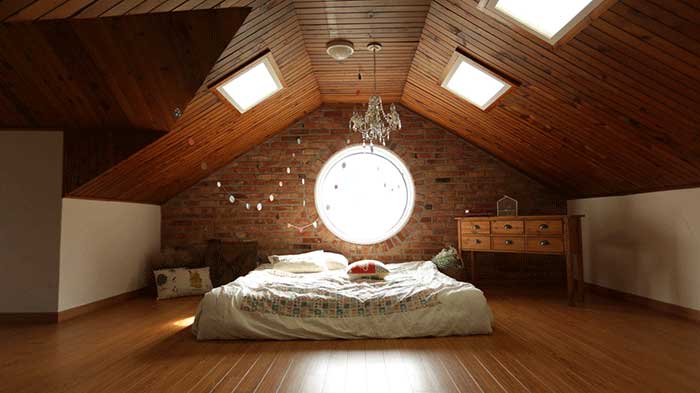
Cocobolo, also known as cocobola (Dalbergia retusa), is widely regarded as one of the finest woods around. It’s sometimes called Nicaragua rosewood, or granadillo in Mexico. Closely related to Brazilian and Honduras rosewoods, cocobolo stands out because of its strength, weight, and striking beauty.
This tree, growing in Central America – Costa Rica, Panama, Guatemala, and others – usually doesn’t exceed 60 feet tall or 24 inches in diameter. Reaching maturity takes around 80 years. As a legume, it’s crucial in preventing soil erosion by fixing nitrogen, making it vital for tropical ecosystems.
Mostly used for luxury items like knife handles, desks, and guitar parts, its vibrant color and durability make it highly sought after. However, because of over-harvesting, it’s now rare and expensive.
Working with cocobolo can be tricky; its dust can cause allergic reactions, similar to poison ivy. The wood itself is waxy, which makes it hard to glue, but the smooth finish it leaves after machining is beautiful. Despite its hardness, it’s relatively stable, with minimal shrinkage during drying.
Reasons Why Cocobolo Wood Desks Are So Expensive
Cocobolo desks are super rare and because of this reason, they cost a lot. The unique and scarce Central American tropical hardwood, cocobolo is used in the manufacturing of this desk. Because of its rare texture and color scheme, it is popularly known as a rainbow of wooden colors.
This wood can range from yellow to purple tones and is easily recognizable due to its fine texture. Such exquisite and matchless features make these expensive desks really pricey such that the overall cocobolo wood desk price and cocobolo wood desk cost normally are around thousands of dollars. On average the minimum cocobolo desk price for which you can get it is $7,000 cocobolo desk.
Moreover, Cocobolo is a type of rosewood but unlike other rosewoods, it is really difficult to find. Just because of its rarity, it encompasses in most expensive woods of the world. Even if you find cocobolo rosewood somewhere, it’s really difficult to mill-it because of its small size and fewer branches.
All these factors combine to contribute to the unbelievably high prices of cocobolo artifacts such as desk cocobolo, cocobolo knife, cocobolo floors, cubicle alternatives etc.
Cocobolo Wood Works
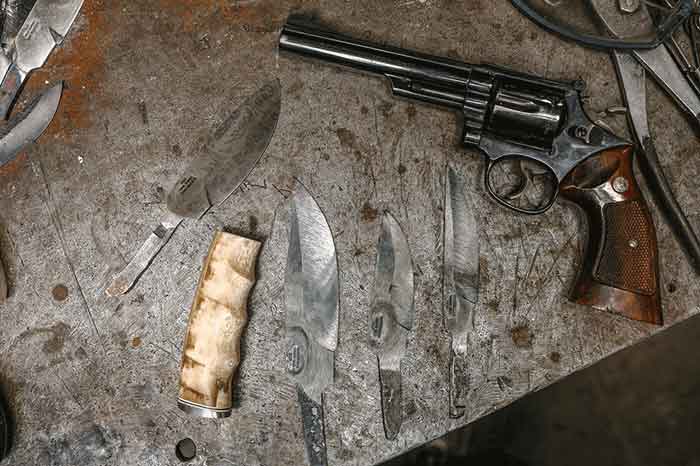
You can find several cocobolo wood collectibles other than a desk. Like you can see cocobolo wood in cocobolo knife handles, the advantage of using cocobolo wood as knife handles is its sustainability. Similarly, coco bolo grips can last for a long time without asking for maintenance. You can also apply cocobolo veneer on other wooden decorative items to give them an executive cocobolo wooden touch.
Cocobolo wood guitars are an attraction for specific enthusiasts, people who know about the rarity of this wood. Cocobolo guitars can last longer than any other cheaper wooden guitar, they can produce a better sound with better quality in a musician’s hand.
Read More: Best Female Vocalists of The Industry
People use cocobolo floors in places where they want attention, and to give their room something extraordinary. Cocobolo wood is not only a rare type of wood, but it is also a way of showcasing class and status that creates an executive feel.
Famous Cocobolo Wood Designers
Here are two of the most famous designers to have worked on cocobolo wood to create their masterpieces that have become immortalized in history.
1. Don S. Shoemaker (1919-1990)
One of the finest cocobolo wood artisans is none other than Don S. Shoemaker. His prolific designs are synonymous with class and elegance. He designed modernist furniture in Mexico for the major portion of his life and some of his unique designs command up to $10,000 (USD).
2. Wharton Esherick (1887-1970)
Wharton combined the aesthetic sense of a painter to his wooden carvings producing unparalleled sculptures the likes of which had seldom been seen before.
One of his most famous pieces is perhaps the 1933 sculpture “Essie” / “Rebecca” fashioned out of cocobolo wood. The statue sold for an astonishing $123,750 (USD) in November 2014 at Freeman’s. It is now housed in Modernism Museum Mount Dora.
Commercial Uses of Cocobolo
Manufacturers have been using Cocobolo for centuries to make various wood items and frames. Its appearance and color make it an ideal timber for woodworkers, artisans, and instrument creators. Here are a few examples of Cocobolo’s versatile applications:
Furniture Manufacturing:
Cocobolo wood finds its primary application in crafting fine furniture due to its robust durability and appealing aesthetics. Its color and intricate grain patterns have garnered favor from artisans and interior designers alike.
Flooring:
Cocobolo wood is renowned for its exceptional hardness and durability, rendering it an ideal selection for premium flooring that is less susceptible to denting and scratching.
Musical Instruments:
Cocobolo timber is a top choice for crafting musical instruments like acoustic guitars, clarinets, and oboes because it produces a crisp and lively sound.
Tools Handles and Grips:
Its robustness and ability to repel moisture make it a superb option for crafting knife handles and grips.
Small Decorative Items:
Cocobolo timber has extensive applications in crafting petite ornamental objects like bowls, writing instruments, chess figurines, and containers.
Normal Wooden Desk vs Cocobolo Desk: A Comparison
| Normal Wood | Cocobolo Wood | |
| Price | Lower in Price | Really Expensive |
| Durability | Depends on the type of wood you’re using | Really Durable and even resistant to insect attack |
| Appearance | The outlook of a normal wooden desk depends on the type of wood you’re using | Cocobolo is a kaleidoscope of colors and this makes its appearance really unique |
| Existence | You can easily find normal wood everywhere | This wood is quite rare and is only native to central America |
| Workability | Normal woods are quite easy to work with and can easily be glued together | High amounts of oils are found in this wood which makes it difficult to glue together. |
However, if you’re looking for an alternative for cocobolo office desk then you can consider the following options:
6 Cocobolo Wood Alternatives
| Alternative Woods | Reasons |
| Cherry Wood | Affordable, and available in laminate finish as well as in hard solid wood desk |
| Red Cedar Wood | Posses similar beauty characteristics to Cocobolo wood |
| Maple Wood | Ultra-durable and an affordable alternate to Cocobolo |
| Walnut Wood | It’s natural brown grains make it alternative to Cocobolo |
| Pine Wood | Equally durable and sustainable to Cocobolo Wood |
| Douglas Fir Wood | Boast reddish-brown color, with a strong and wavy grain |
1. Cherry Wood

Another common and easily available option for you is cherry wood, which is largely harvested in North America. You can easily use cherry wood desk as a sustainable alternative to cocobolo.
2. Red Cedar Wood
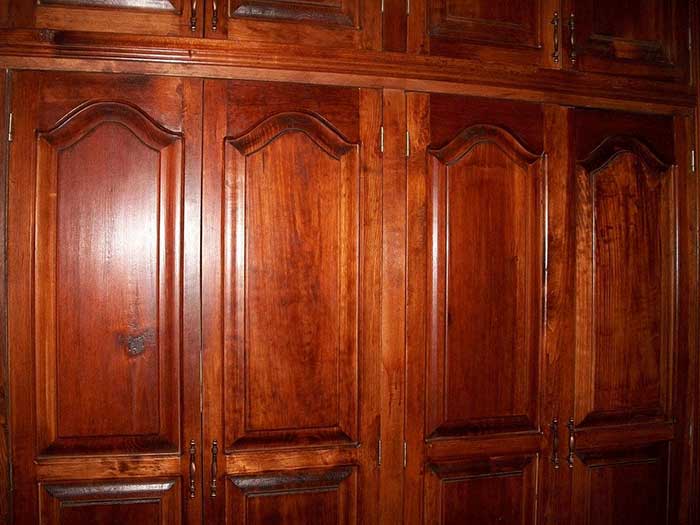
If you’re looking for a wood that’s as aesthetically appealing as cocobolo rosewood, red cedar will be perfect for you. The red tint of this wood is eye-catching and can add elegance and class to any room.
3. Maple Wood

Maple is of a natural blonde shade and is an affordable alternate for cocobolo. This type of wood is super durable.
Related Article: Staining Maple Wood
4. Walnut Wood

Although walnut is pricier than other woods, it’s still cheaper than cocobolo. Walnut is a great alternative for cocobolo wood because of its brown wooden grain.
Other than these woods you can also use any other kind of rosewood you want because cocobolo vs rosewood is always pricier. So, if you go for other rosewood options, you’ll be able to find some more economical options when compared to buying cocobolo wood for sale.
5. Pine Wood
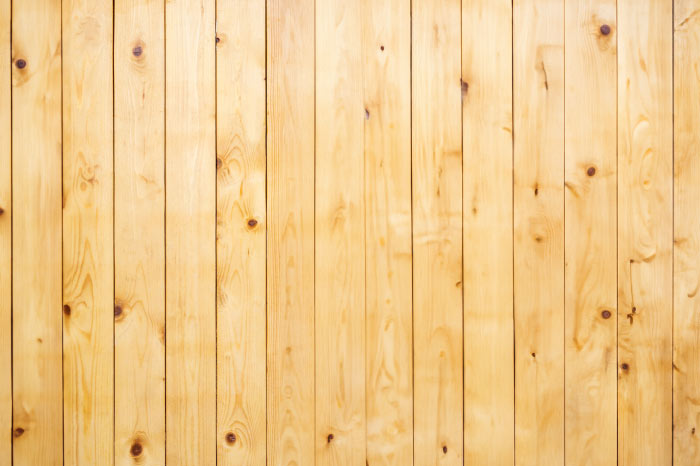
An excellent alternative to cocobolo wood, Pine is a type of softwood with a light brown to yellow color, with a straight and even grain. It is easy to work with, as it cuts, glues, and finishes well. It also has good dimensional stability, meaning it doesn’t warp or shrink much.
Pine wood is suitable for indoor and decorative purposes, such as furniture, window frames, paneling, and carvings. You can also use it for outdoor purposes, but it needs to be treated or painted to prevent moisture and pest damage.
6. Douglas Fir Wood
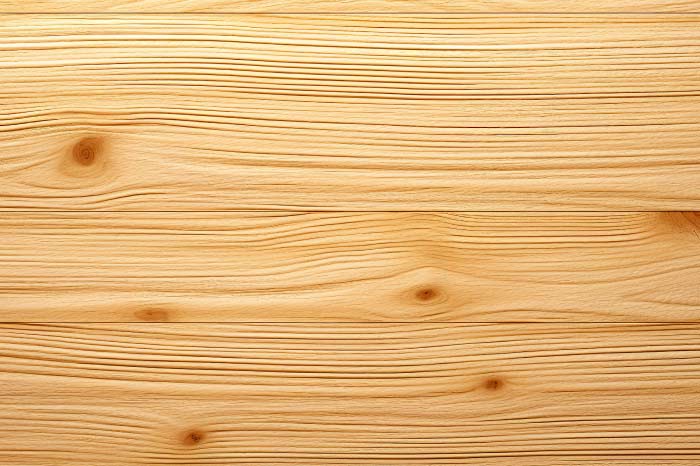
It is also softwood boasting a reddish-brown color, with a strong and wavy grain. It is very stiff and strong for its weight and is among the hardest and heaviest softwoods commercially available in North America. You can best use it for structural and outdoor purposes, such as beams, posts, flooring, siding, pallets and decking. You may also employ it for marine applications, as it has some resistance to saltwater.
Books that have Mentioned a Cocobolo Desk
The Honored Society
In the book ‘The Honored Society,’ Director Anderson’s office is a testament to his power and status. His immaculate cocobolo desk sits in a spacious office on the top floor of the J. Edgar Hoover Building. The room is adorned with a black leather couch, a crystal decanter with two glasses, and a Cuban cigar humidor.
Why People Love Cocobolo Desk?
The main reason why a vast majority of people adore the cocobolo desk is because of its rareness. As the cocobolo desk is crafted from a super rare kind of hardwood i.e., cocobolo hardwood. This tree grows at such a slow speed that it takes years to grow, so they are really rare to harvest, leading to the unbelievably high cocobolo wood price.
Moreover, the small size of these trees makes it hard to produce lumber for use. All these factors combine to make the cocobolo wood as precious and unique as it is.
So, the low availability of this wood makes its demand quite high and as a result, people owning artifacts of this wood are considered wealthy and super-rich in the society. Because of these reasons, most people prefer getting a cocobolo desk.
Another thing that contributes to the overwhelming fame and popularity of the cocobolo desk is its artistic beauty. The cocobolo wood desk is a class of its own and this is the main reason why popular series such as Breaking Bad and Better Call Saul, has portrayed it as a symbol of class and luxury.
Resultantly, you can see a visible rise in the demand for cocobolo wood desks for sale as more and more people are trying to buy them so they can leave an impression on their clientele.
Frequently Asked Questions
Cocobolo wood is sourced from the cocobolo tree (Dalbergia retusa), a deciduous tree found in Central America. Due to its slow growth, cocobolo wood is both rare and costly. Despite this, the Cocobolo tree faces significant harvesting pressure and is categorized in CITES Appendix II, subject to restrictions covering all Dalbergia species.
Cocobolo Wood is generally deemed non-toxic; however, when handling it—whether cutting, sanding, or shaping—be aware that fine wood dust particles may lead to skin, eye, and respiratory discomfort. Thus, when working with Cocobolo Wood or similar materials, ensure your safety with proper precautions, like donning suitable personal protective gear, including a dust mask, safety goggles, and gloves.
While Cocobolo is a robust and durable timber demanding minimal upkeep compared to alternative hardwoods, it remains susceptible to degradation without periodic cleaning and attention. Preserving the innate hue of a cocobolo desk or any cocobolo item necessitates routine maintenance using natural oils. It’s advisable to refrain from employing abrasive chemicals that might deplete the wood’s inherent pigmentation.
In addition to its application in firearms and knives, cocobolo wood is highly sought-after for intricate inlay craftsmanship on premium cue sticks, law enforcement batons, writing instruments, brush handles, decorative bowls, tobacco pipes, ornate jewelry cases, deluxe desktops, and various luxury specialty products.
Cocobolo timber boasts remarkable hardness and density, often scoring approximately 2,960 pounds-force (lbf) on the Janka scale, ranking it among the world’s toughest woods. Nevertheless, its considerable density and weight can pose challenges for novice artisans, demanding both sharp tools and a proficient artisan.


